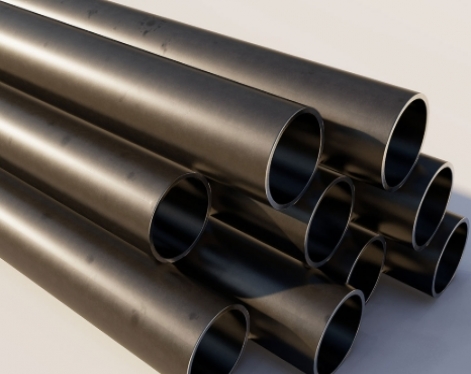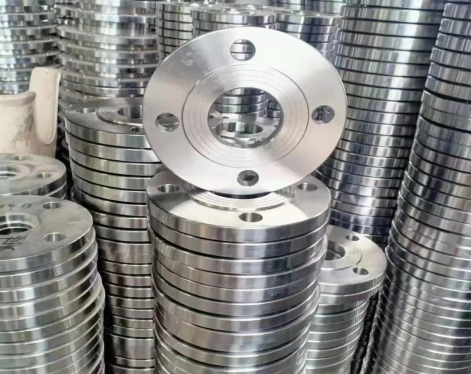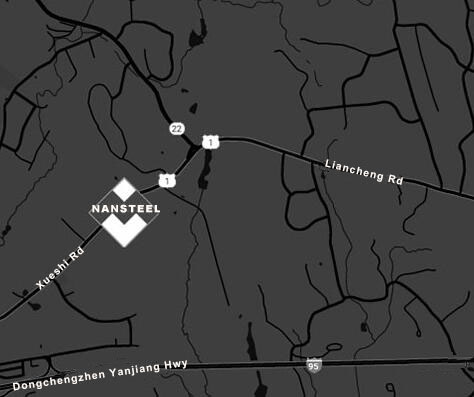Is seamless steel pipe easy to weld? The answer to the question of whether seamless steel pipe is easy to weld is not a simple "yes" or "no". It mainly depends on the material and wall thickness of the steel pipe, rather than its "seamless" characteristics. Generally speaking, seamless steel pipes themselves have no welds, which avoids welding difficulties caused by quality problems of the welds themselves. However, in actual welding, you still need to connect the seamless steel pipe to another section of pipe or pipe fitting. At this time, you must consider the following two points.
Material is the decisive factor
The welding difficulty and requirements of seamless steel pipes of different materials vary greatly.
1. Ordinary carbon steel seamless pipe (such as 20#, Q235B, Q345B)
Good welding. This type of steel pipe is the easiest to weld. They have low carbon content, excellent welding performance and good plasticity. When welding, as long as you choose the right welding rod and welding method, you usually don't need complicated preheating or post-weld heat treatment to get satisfactory welding quality.
2. Alloy steel seamless pipes (such as 12Cr1MoVG, 15CrMoG, P91)
Welding is difficult. This type of steel pipe is mainly used in high temperature and high pressure environments. Alloy elements such as chromium, molybdenum, and vanadium are added to improve high temperature strength and corrosion resistance. These elements will complicate welding.
Welding Requirements: Specific welding procedures must be strictly adhered to, including the following:
Preheating: The weld area must be preheated before welding to prevent cracking.
Controlling Welding Temperature: The interpass temperature must be strictly controlled during welding.
Post-weld Heat Treatment: Heat treatment is usually required after welding to relieve welding stresses, improve the microstructure of the weld and heat-affected zone, and prevent cracking.

3. Stainless steel seamless pipe (such as 304, 316L)
Due to its unique characteristics, seamless stainless steel pipes require specialized welding processes. Improper welding can easily lead to the following problems:
Intergranular corrosion: Chromium precipitation may cause the weld area to lose its corrosion resistance.
Welding deformation: Stainless steel has a large coefficient of thermal expansion and is prone to deformation after welding.
Specialized welding consumables are required: Specialized stainless steel welding rods or wires that are compatible with the base material must be used.
Influence of wall thickness and welding method
1. Thin-walled seamless steel pipes
Welding thin-walled pipes requires skilled welders and precise current control, otherwise the pipe wall can be easily penetrated. TIG (argon arc welding) and other welding methods with concentrated heat and controlled penetration depth are often used.
2. Thick-walled seamless steel pipes
Multi-layer welding is required, resulting in thick welds. The welds must be welded in multiple layers, and quality assurance must be maintained for each layer. This increases the complexity and workload of the welding process.
Conclusion
So, back to the original question, the "weldability" of seamless steel pipes depends on their material. If you are welding ordinary carbon steel seamless pipes, then they are very easy to weld; but if you are welding alloy steel or stainless steel seamless pipes, then professional welding technology and strict process control are required, otherwise it is difficult to guarantee the welding quality.
Read more: Which Seamless Steel Pipe is the Hardest?
Material is the decisive factor
The welding difficulty and requirements of seamless steel pipes of different materials vary greatly.
1. Ordinary carbon steel seamless pipe (such as 20#, Q235B, Q345B)
Good welding. This type of steel pipe is the easiest to weld. They have low carbon content, excellent welding performance and good plasticity. When welding, as long as you choose the right welding rod and welding method, you usually don't need complicated preheating or post-weld heat treatment to get satisfactory welding quality.
2. Alloy steel seamless pipes (such as 12Cr1MoVG, 15CrMoG, P91)
Welding is difficult. This type of steel pipe is mainly used in high temperature and high pressure environments. Alloy elements such as chromium, molybdenum, and vanadium are added to improve high temperature strength and corrosion resistance. These elements will complicate welding.
Welding Requirements: Specific welding procedures must be strictly adhered to, including the following:
Preheating: The weld area must be preheated before welding to prevent cracking.
Controlling Welding Temperature: The interpass temperature must be strictly controlled during welding.
Post-weld Heat Treatment: Heat treatment is usually required after welding to relieve welding stresses, improve the microstructure of the weld and heat-affected zone, and prevent cracking.

3. Stainless steel seamless pipe (such as 304, 316L)
Due to its unique characteristics, seamless stainless steel pipes require specialized welding processes. Improper welding can easily lead to the following problems:
Intergranular corrosion: Chromium precipitation may cause the weld area to lose its corrosion resistance.
Welding deformation: Stainless steel has a large coefficient of thermal expansion and is prone to deformation after welding.
Specialized welding consumables are required: Specialized stainless steel welding rods or wires that are compatible with the base material must be used.
Influence of wall thickness and welding method
1. Thin-walled seamless steel pipes
Welding thin-walled pipes requires skilled welders and precise current control, otherwise the pipe wall can be easily penetrated. TIG (argon arc welding) and other welding methods with concentrated heat and controlled penetration depth are often used.
2. Thick-walled seamless steel pipes
Multi-layer welding is required, resulting in thick welds. The welds must be welded in multiple layers, and quality assurance must be maintained for each layer. This increases the complexity and workload of the welding process.
Conclusion
So, back to the original question, the "weldability" of seamless steel pipes depends on their material. If you are welding ordinary carbon steel seamless pipes, then they are very easy to weld; but if you are welding alloy steel or stainless steel seamless pipes, then professional welding technology and strict process control are required, otherwise it is difficult to guarantee the welding quality.
Read more: Which Seamless Steel Pipe is the Hardest?









